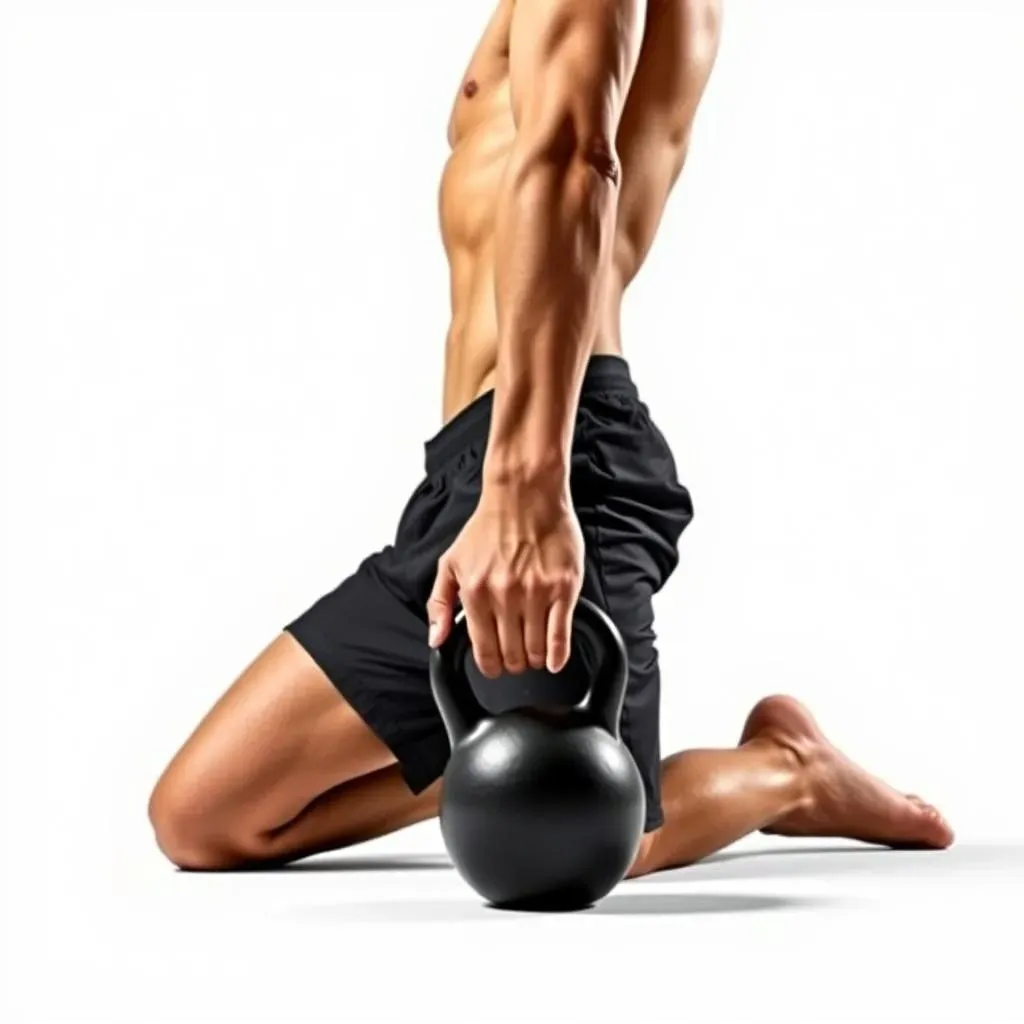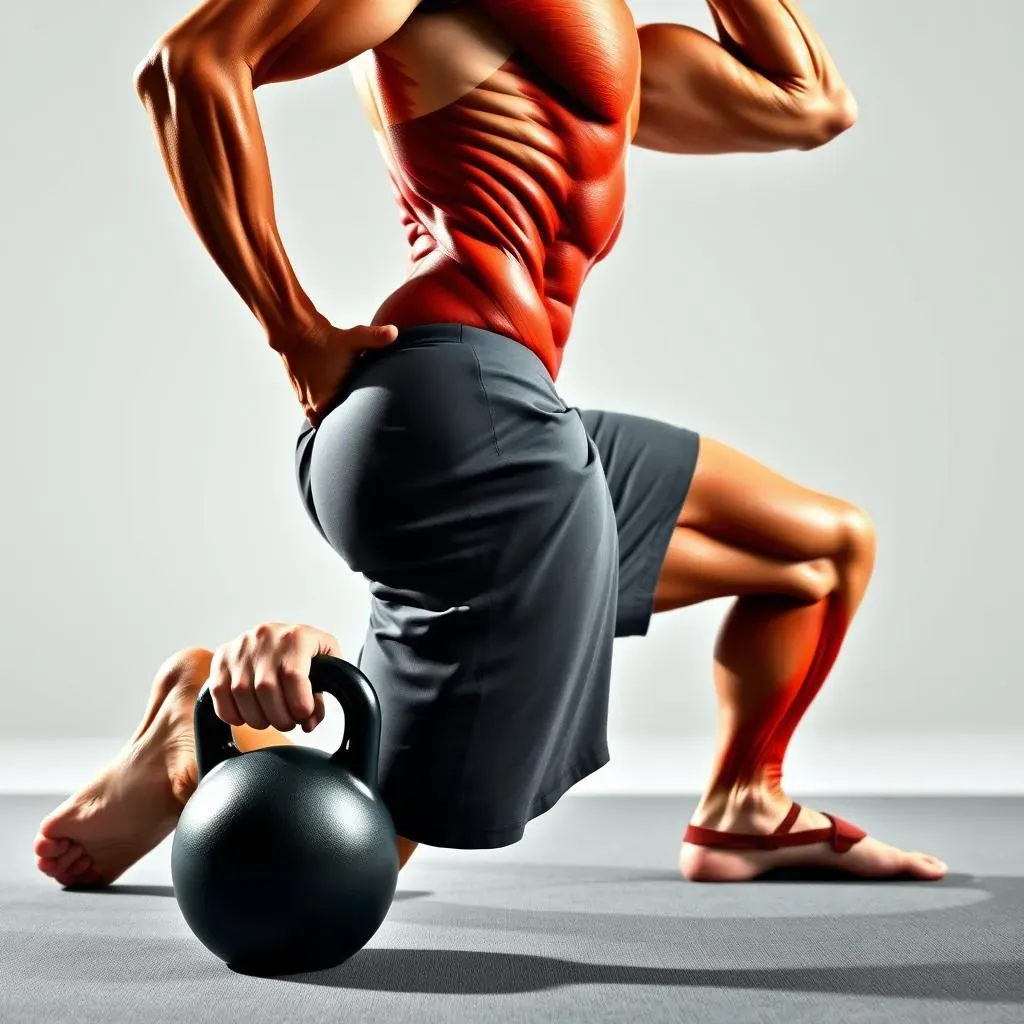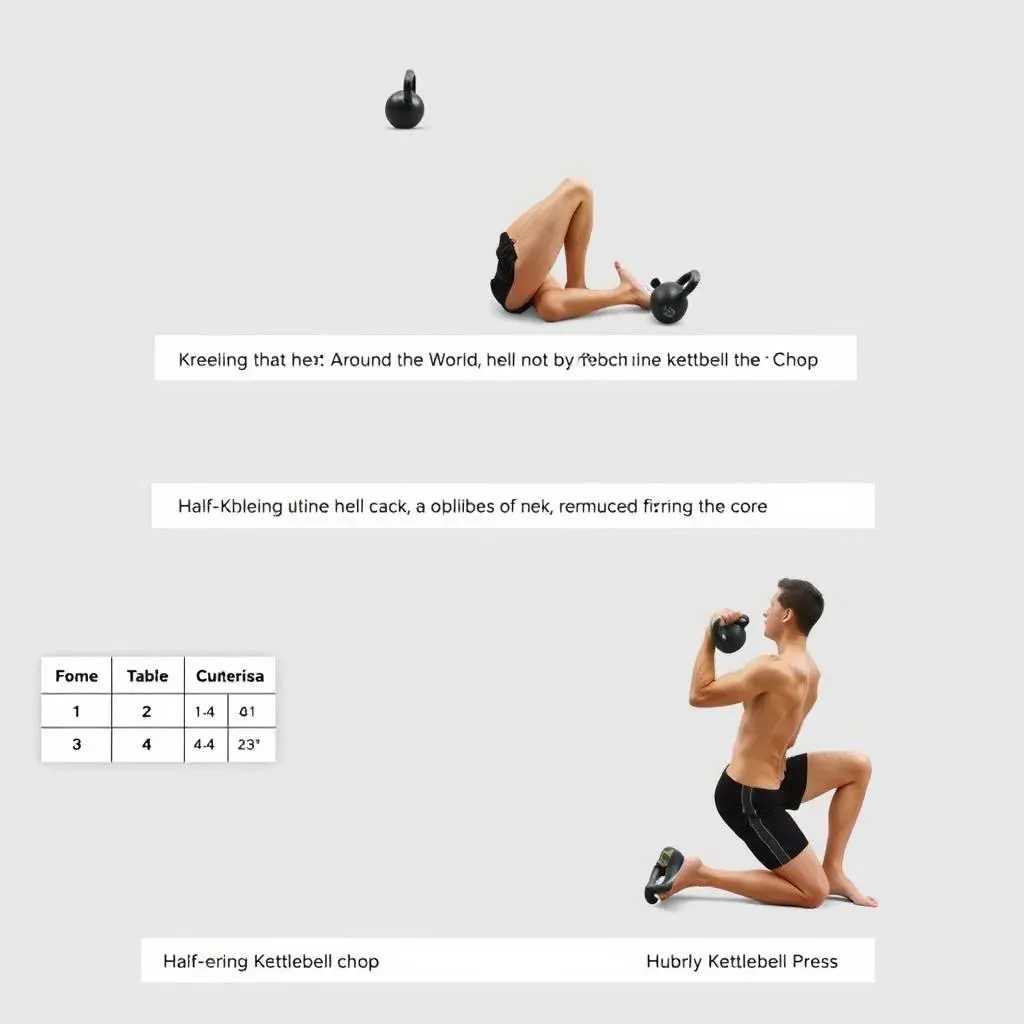Table of Contents
Let's be honest, crunches can get a bit boring, right? If you're on the hunt for a way to make your ab workouts more interesting and effective, then I've got something for you. I'm talking about "kneeling kettlebell abs" exercises, a seriously underrated method that can transform your core strength. Forget those endless sit-ups. We're stepping up to a new level of core engagement. This isn't just about vanity; a strong core is key for everything from lifting heavy things to just having better posture. In this article, we'll explore why kneeling positions are so powerful for ab training, with a special focus on the amazing kettlebell windmill. I will guide you through the setup and show you why this move is a game changer. Then, I'll introduce you to other kneeling kettlebell exercises that will round out your ab workouts. Get ready to discover how kneeling kettlebell exercises can make a real difference to your core strength and overall fitness.
Why Kneeling Kettlebell Exercises Are a Game Changer for Abs

Why Kneeling Kettlebell Exercises Are a Game Changer for Abs
The Stability Advantage
Okay, so you're probably thinking, "kneeling? What's the big deal?" Well, here's the thing: when you're kneeling, your body has to work harder to stay stable. Unlike standing, where you have a wide base of support, kneeling forces your core muscles to kick into high gear just to keep you upright. This means that even simple movements, like holding a kettlebell, become a full-body core workout. It's like turning up the difficulty dial without adding more weight. You'll feel muscles you never knew existed firing up.
Think of it like this, if you are standing doing a bicep curl you will have a much more stable position, but if you are kneeling and doing a bicep curl, you will need to engage your core to remain balanced. This is what makes kneeling so powerful.
More Than Just Crunches
Kneeling kettlebell exercises are not just about flexing your abs; they engage your core in a 360-degree manner. Traditional ab exercises, like crunches, often only focus on the front of your core. But when you're kneeling and working with a kettlebell, you're also hitting your obliques (those muscles on the sides of your abs) and your lower back. This is crucial for overall core strength and stability, helping you in everyday activities and preventing injuries. It's like building a fortress, not just a wall.
It's not about just doing the movement, but about being mindful of your body and feeling the muscles working. You'll feel the burn, but it's a good burn, the kind that makes you feel like you're actually doing something powerful.
Exercise Type | Core Engagement | Muscles Targeted |
|---|---|---|
Crunches | Front of Core | Rectus Abdominis |
Kneeling Kettlebell | 360-degree | Rectus Abdominis, Obliques, Lower Back |
Mastering the Kneeling Kettlebell Windmill for Core Strength

Mastering the Kneeling Kettlebell Windmill for Core Strength
The Kettlebell Windmill: Your New Best Friend
Alright, let’s get into the good stuff: the kneeling kettlebell windmill. This isn’t your average ab exercise; it’s a full-body movement that’ll challenge your core, improve your hip mobility, and even build shoulder stability. Sounds like a lot? It is, but that's what makes it so effective. Think of it as a dance between your core and gravity, where you're constantly fighting to stay balanced and in control. It's a bit like trying to hold a plank while also reaching for a distant object, all while kneeling. It's a coordination challenge that pays off big time.
I know it looks intimidating, but trust me, once you get the hang of it, you'll be addicted. It's one of those exercises that makes you feel like a total beast when you nail it. And the best part? You don't need a ton of weight to feel it working.
Setting Up for Success
Okay, let’s break down how to set up for the kneeling kettlebell windmill. Start by kneeling on the ground, your knees about hip-width apart. Grab a kettlebell and clean it to your shoulder, then press it overhead, locking out your elbow. Now, keep your eyes on the kettlebell – this is super important! It helps with balance and keeps your shoulder in a good position. Think of your body as a clock, with the kettlebell being at the 12 o’clock position. As you begin the windmill, you’re going to slowly hinge at your hips, pushing your glutes back, and rotating your chest towards the ground, while keeping that kettlebell overhead. You want to make sure to keep your shoulder blades tight and not let your shoulder roll forward.
It's like you're trying to reach for something on the floor, but instead of just bending over, you're rotating your body around that kettlebell, using your core to stay stable. You'll feel your obliques screaming at you, but that's a good sign.
Step | Action | Focus |
|---|---|---|
1 | Kneel, hold kettlebell overhead | Stable base, locked elbow |
2 | Hinge at hips, rotate chest | Push glutes back, keep shoulder tight |
3 | Lower towards the ground | Control, core engagement |
The Nitty-Gritty: Form is King
Here’s where many people go wrong – they arch their back and lose core tightness. Don’t do that! Instead, imagine you are holding a fragile egg in your lower back and you don’t want to crack it. Keep your ribcage pulled down and your core braced. It’s like you are trying to compress your body into a tight, stable package. Now, as you lower down, you’re not aiming to touch your elbow to the floor. If you can, great. But if you can't, that’s okay, just try to touch your hand to the ground. It's about the quality of the movement, not how far you can reach.
When you’re coming back up, don’t just flop back up. Use your glutes and core to power yourself back to the starting position. It’s like you're squeezing everything together, creating a solid base. It's all about control and precision, not just flinging your body around.
Troubleshooting and Tips
If you’re finding this exercise tough at first, don’t worry, it's normal. Try practicing the movement without the kettlebell first, just to get the hang of the rotation. Then, start with a lighter weight and gradually increase it as you get stronger. Also, you don’t have to do a million reps, focus on the quality of the reps, not quantity. Start with three sets of six to eight reps, and really focus on mastering the movement. Think of it like learning a new dance move – you need to practice slowly to get it right before you can speed it up.
Remember, this exercise is not just about strength; it’s about mobility, stability, and control. It's a whole package deal, and the benefits extend way beyond just having a six-pack. It's about building a more resilient, functional body.
Other Effective Kneeling Kettlebell Exercises for a Full Ab Workout

Other Effective Kneeling Kettlebell Exercises for a Full Ab Workout
Kneeling Kettlebell Around the World
Okay, so you've got the windmill down, what's next? Let's talk about the "kneeling kettlebell around the world." This exercise is a fantastic way to target your obliques and improve your rotational core strength. You'll start in a tall kneeling position, holding a kettlebell with both hands in front of you. Then, you're going to slowly move the kettlebell in a circle around your head, keeping your core tight and your back straight. Imagine you're stirring a giant pot of soup, but instead of moving your arms, you're moving your entire torso. It's a controlled movement, not a wild swing.
I know, it sounds simple, but it will get your abs screaming. The key is to keep that kettlebell moving smoothly and not let your body flop around. Think of it as a core dance, where your abs are leading the way.
Kneeling Kettlebell Chop
Next up, we have the "kneeling kettlebell chop." This move is awesome for building power and stability through your core. You'll start in a half-kneeling position, holding a kettlebell with both hands. Then, you'll bring the kettlebell down towards the opposite hip, as if you're chopping wood. The move should come from the rotation of your core, not just your arms. It's like you are a lumberjack, but instead of using an axe, you're using a kettlebell and your core muscles.
The beauty of this exercise is that it’s not just about strength, it's about coordination and control. You'll feel your obliques and your lower back working hard to keep you stable. And remember to keep your core tight and not let your back arch. You want to be like a solid tree trunk, not a flimsy twig.
Exercise | Focus | Key Benefit |
|---|---|---|
Kneeling Around the World | Rotational Core | Oblique strength |
Kneeling Kettlebell Chop | Power, Stability | Full core engagement |
Half-Kneeling Kettlebell Press
Don't underestimate the power of the "half-kneeling kettlebell press." It might seem like a shoulder exercise, but trust me, your core will be working overtime to keep you stable. You'll start in a half-kneeling position, holding a kettlebell at your shoulder. Then, you'll press the kettlebell straight up overhead, keeping your core tight and your body stable. It's like trying to balance a stack of books on your head while standing on one leg. It forces your core to stabilize your body, and it's more challenging than you think.
The half-kneeling position reduces the stability you have, forcing your core to work harder to control the movement. The key here is to not let your back arch or your body sway. Keep everything tight and controlled, like a statue that refuses to move. It's a great exercise for building overall core strength and stability, and it’s a fantastic way to finish off your kneeling kettlebell ab workout.